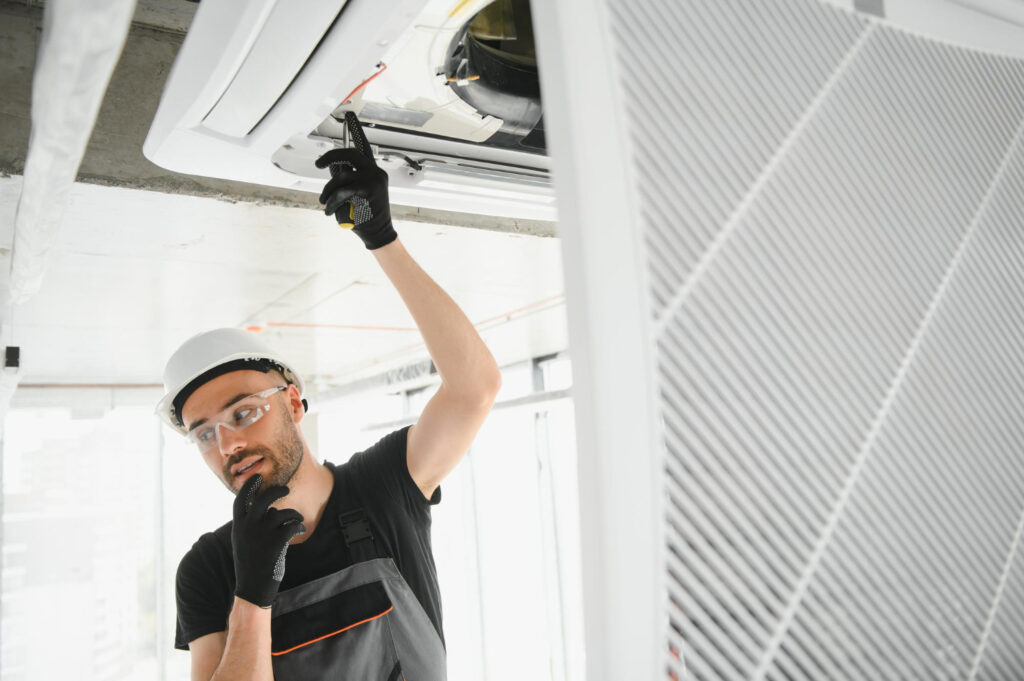Deciding the best way to cool your home can be a complex choice, especially when considering the wide array of options available on the market today. Among the most popular are ductless and central air conditioning systems, each offering distinct benefits and challenges. As homeowners seek more efficient, cost-effective solutions that align with their living spaces and lifestyle, understanding these differences becomes crucial.
Overview of Ductless and Central Air Conditioning Systems
Ductless and central air conditioning systems offer distinct cooling solutions that cater to different needs and preferences. Ductless systems, also known as mini-split systems, consist of one or more indoor units connected to an outdoor compressor. They are ideal for cooling specific areas of your home without the need for extensive ductwork. This makes them a perfect option for older homes or extensions where installing new ducts would be impractical or too costly.
On the other hand, central air conditioning systems are designed to cool multiple rooms or the entire home using a network of ducts connected to a single, powerful air handling unit. Central systems are highly efficient for large spaces and provide a uniform cooling experience throughout the entire home. They are also neatly hidden, with most of the operational components out of sight, which can be a significant aesthetic consideration.
Comparing Installation Processes: Ductless vs. Central AC
When considering the installation of a new air conditioning system, it’s important to understand the differences in the installation processes between ductless and central AC systems. Installing a ductless system typically involves less invasive procedures and can be completed more quickly. Our technicians mount the indoor and outdoor units, connect them with refrigerant lines, and make electrical connections. This simplicity often makes ductless systems an appealing choice for those looking to avoid the disruption and expense of heavy construction.
Conversely, installing a central air conditioning system can be more complex, particularly if your home does not already have existing ductwork. The process involves extensive planning to lay out ducts efficiently, ensuring optimal air flow in every room. Installation might require modifications to ceilings and walls to accommodate the ducts, which can increase the project’s duration and cost. However, once installed, central air systems offer ease of maintenance and operation and can increase the overall value of your property by being a highly desirable feature in new homes.
Each type of system has its merits, and our professionals can help you decide which is best suited to your specific circumstances, balancing factors such as installation complexity, cost, and long-term efficiency.
Cost-Effectiveness and Energy Efficiency: A Detailed Analysis
When choosing between ductless and central air conditioning systems, cost-effectiveness and energy efficiency are among the top considerations for homeowners. Ductless AC systems, often referred to as mini-splits, have distinct advantages in terms of energy efficiency. They avoid energy losses typically associated with ductwork. This feature alone makes ductless systems highly appealing to those looking to reduce their energy bills.
Central AC systems, while potentially less energy-efficient due to duct losses, offer cost-effectiveness in their own right, especially when cooling large homes where multiple rooms need simultaneous conditioning. The initial installation cost might be higher, but the ability to cool multiple rooms can lead to long-term savings, particularly in regions with extremely high temperatures. For both systems, our professionals ensure that they’re tailored effectively to your home’s specific needs, optimizing the balance between upfront costs and ongoing energy expenditure.
Choosing the Right System: Considerations for Different Home Types
Selecting the right air conditioning system requires understanding the specific needs of your home. Ductless systems are ideal for homes without existing ductwork, smaller homes, or for adding air conditioning to new additions without connecting to the main HVAC system. They offer the flexibility to cool specific zones of your home, which is an efficient way to manage energy usage and maintain comfort where it’s really needed.
On the other hand, central air conditioning systems are typically best for larger homes with existing ductwork. They provide a consistent cooling experience throughout the entire house and can be more aesthetically pleasing since most of the system components are hidden. The main consideration is ensuring that your ductwork is in good condition and properly sealed to minimize energy losses. Our team specializes in evaluating your home’s layout, existing systems, and your cooling needs to recommend the most appropriate AC system.
Conclusion
Choosing the right air conditioning system—whether ductless or central—depends on various factors, including the size of your home, the existence of ductwork, your cooling needs, and energy efficiency goals. At our company, we are committed to guiding you through these considerations to ensure you find the best system for your home. Our professionals at Sprinter Total Indoor Comfort are equipped with the knowledge and experience to provide high-quality installations that enhance the comfort and efficiency of your living space.
If you’re considering installing a new AC system or need advice on which system would best suit your home, contact our HVAC company in Rigby today. Our team is ready to provide expert installation and maintenance services, ensuring you achieve optimal comfort and efficiency in your home. Let us help you make the most informed decision for a cooler, more comfortable home environment.




